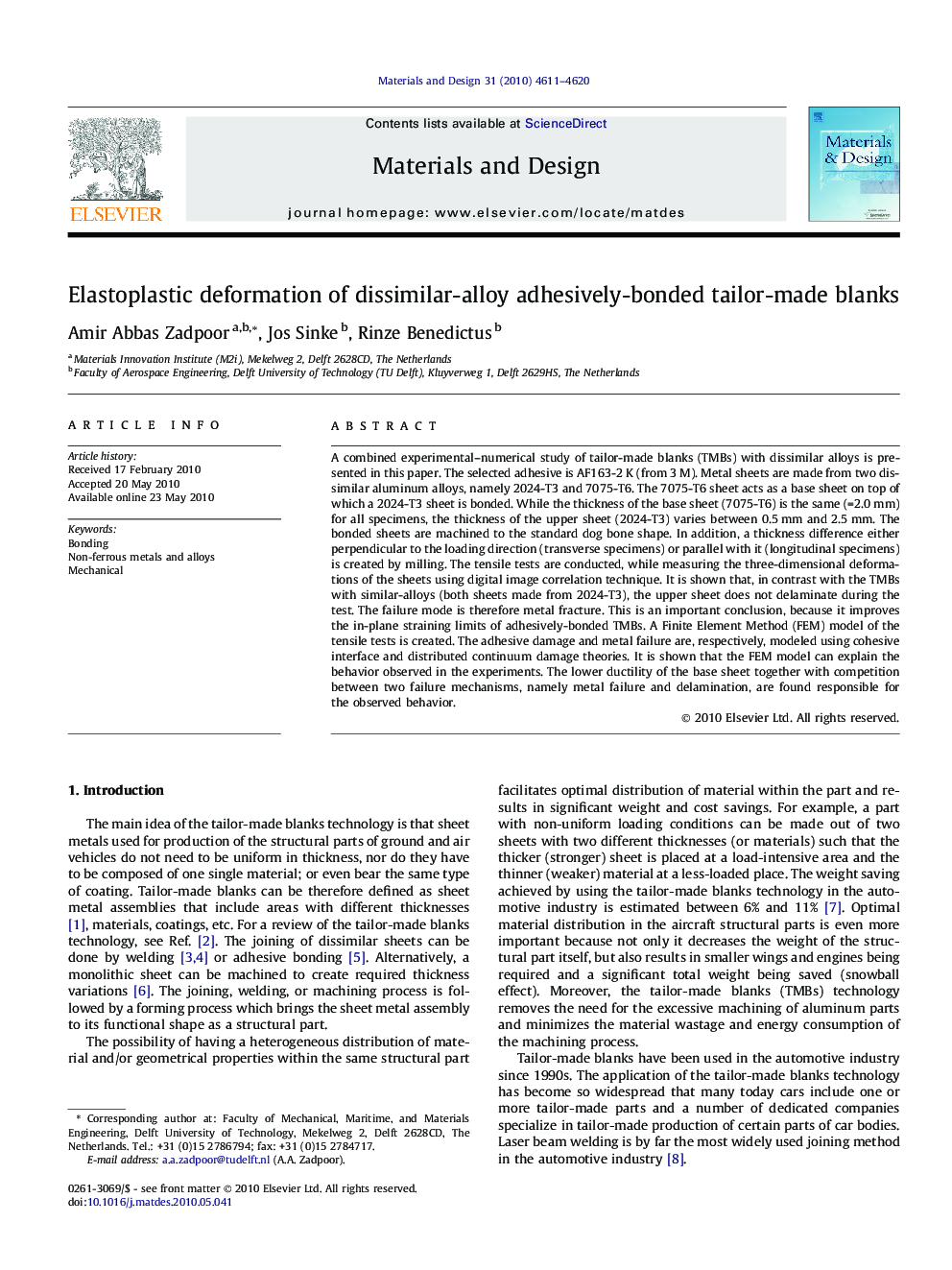| کد مقاله | کد نشریه | سال انتشار | مقاله انگلیسی | نسخه تمام متن |
|---|---|---|---|---|
| 831751 | 1470367 | 2010 | 10 صفحه PDF | دانلود رایگان |

A combined experimental–numerical study of tailor-made blanks (TMBs) with dissimilar alloys is presented in this paper. The selected adhesive is AF163-2 K (from 3 M). Metal sheets are made from two dissimilar aluminum alloys, namely 2024-T3 and 7075-T6. The 7075-T6 sheet acts as a base sheet on top of which a 2024-T3 sheet is bonded. While the thickness of the base sheet (7075-T6) is the same (=2.0 mm) for all specimens, the thickness of the upper sheet (2024-T3) varies between 0.5 mm and 2.5 mm. The bonded sheets are machined to the standard dog bone shape. In addition, a thickness difference either perpendicular to the loading direction (transverse specimens) or parallel with it (longitudinal specimens) is created by milling. The tensile tests are conducted, while measuring the three-dimensional deformations of the sheets using digital image correlation technique. It is shown that, in contrast with the TMBs with similar-alloys (both sheets made from 2024-T3), the upper sheet does not delaminate during the test. The failure mode is therefore metal fracture. This is an important conclusion, because it improves the in-plane straining limits of adhesively-bonded TMBs. A Finite Element Method (FEM) model of the tensile tests is created. The adhesive damage and metal failure are, respectively, modeled using cohesive interface and distributed continuum damage theories. It is shown that the FEM model can explain the behavior observed in the experiments. The lower ductility of the base sheet together with competition between two failure mechanisms, namely metal failure and delamination, are found responsible for the observed behavior.
Journal: Materials & Design - Volume 31, Issue 10, December 2010, Pages 4611–4620